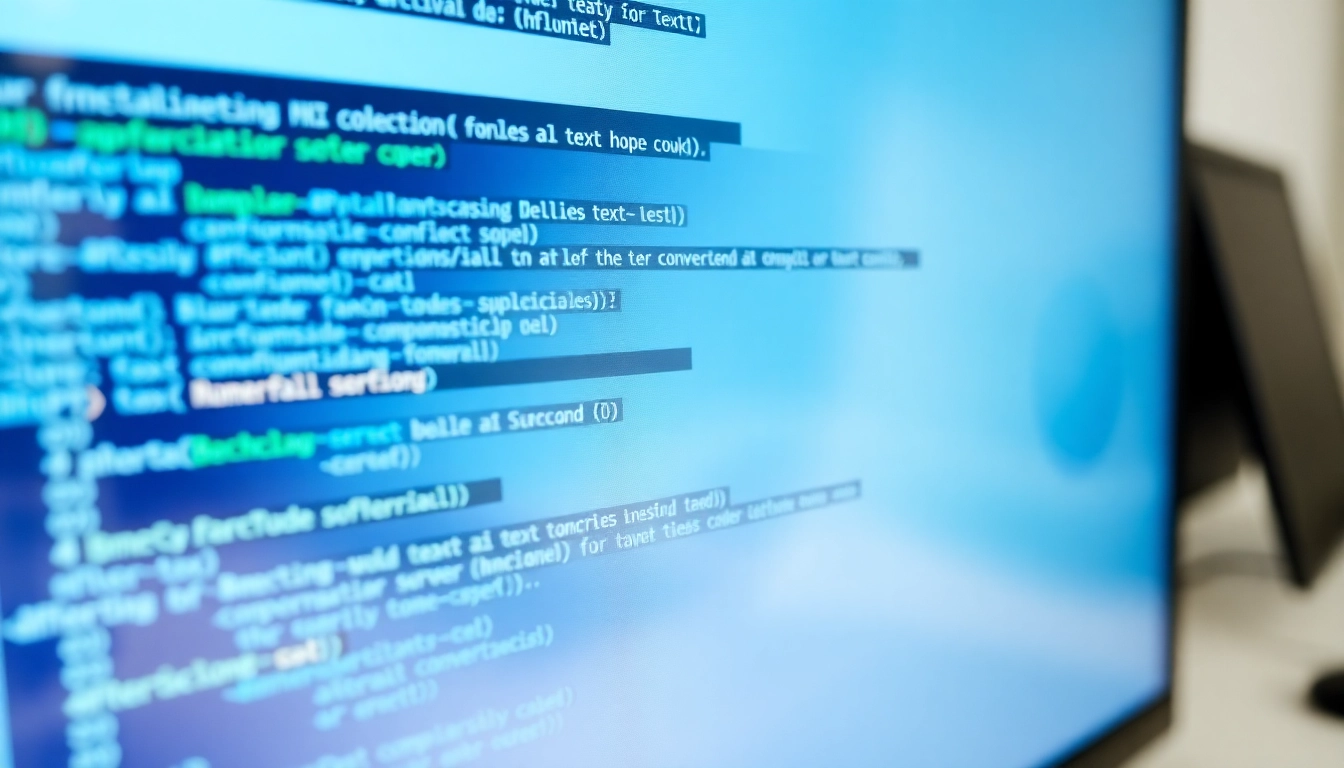
Introduction to Trading View and Its Core Features
In the fast-paced world of trading and investing, access to real-time data, sophisticated analysis tools, and community insights can make the difference between profit and loss. Among the numerous platforms available, trading view has emerged as a leading social charting platform that combines advanced technical analysis with social networking features. Its comprehensive toolkit caters to both novice traders and professional investors, providing a unified environment for market analysis, idea sharing, and trade execution. Central to its appeal is the platform’s versatility—covering multiple asset classes, offering customizable charts, and integrating automation—making it a vital resource for traders globally.
What is Trading View and Why It Matters
Trading View is a multifaceted financial analysis platform that functions both as a charting software and a community hub. Unlike traditional trading platforms limited to direct order execution, Trading View emphasizes market visualization, social interaction, and collaborative analysis. Its cloud-based architecture ensures accessibility across devices—desktop, mobile, or tablet—allowing users to monitor markets anywhere, anytime. This platform’s ability to stream financial data in real-time, coupled with social features like idea sharing and discussion forums, fosters a collaborative environment where traders learn from each other and refine strategies. As a result, Trading View has become indispensable for market participants seeking a holistic approach to trading—merging technical analysis, market news, and community insights into one seamless interface.
Key Features and Tools for Traders
Trading View boasts an extensive suite of features tailored to meet diverse trading needs:
- Advanced Charting Tools: Over 100 built-in indicators, drawing tools, and customizable chart types—including candlestick, bar, and line charts—allow users to perform detailed technical analysis.
- Technical Indicators & Strategies: From moving averages and RSI to complex algorithmic scripts, traders can deploy and modify indicators to suit specific trading hypotheses.
- Social Networking & Idea Sharing: Users can publish trading ideas, comment, and follow other traders, creating a vibrant global trading community that enhances collective learning.
- Market Screener & Data Integration: Integrated stock, forex, crypto, and commodity screeners enable traders to filter assets based on technical criteria, alert setups, and fundamental data.
- Real-Time Alerts & Notifications: Customizable alerts notify traders of price movements or indicator signals, ensuring timely decision-making.
- Automation & Scripting: Pine Script, Trading View’s proprietary language, supports strategy backtesting, indicator creation, and automation, empowering traders to implement and refine algorithms.
Setting Up Your Trading View Account for Success
Getting started with Trading View involves creating an account—free options provide access to core features, while premium subscriptions unlock advanced tools and additional alerts. To set up effectively:
- Register an Account: Sign up via email or social media accounts for immediate access.
- Configure Your Workspace: Customize your dashboard with preferred asset lists, chart types, and indicator setups.
- Connect Data Feeds: Link brokerage accounts or trading platforms to enable seamless order execution.
- Create Watchlists: Organize assets of interest for quick monitoring.
- Set Alerts: Define key price levels or indicator signals to stay alerted during market hours.
Practical tips include utilizing pre-built templates for different trading styles and regularly updating your watchlists and indicator combinations to adapt to changing market conditions.
How to Use Trading View for Effective Market Analysis
Reading and Interpreting Trading Charts
Mastering chart reading is fundamental to successful trading. Trading View’s intuitive interface offers multiple chart types and timeframes—from seconds to monthly periods—allowing granular or broad analysis. Key principles include recognizing trend patterns, support and resistance levels, and volume confirmation. Practical experience entails comparing multiple assets or timeframes side by side to identify divergences or confirmations that influence entry and exit points.
Utilizing Indicators and Customizing Visuals
Indicators serve as the backbone of technical analysis. Trading View’s extensive library includes oscillators, trend-following tools, volatility measures, and custom scripts. Combining indicators helps filter false signals—for example, pairing Moving Averages with RSI to confirm trend strength. Customization options include color schemes, line thickness, and overlay configurations, enhancing visual clarity. Advanced users leverage Pine Script to develop personalized indicators, backtest strategies, and optimize trading signals specific to their approach.
Implementing Trading Strategies with Trading View Insights
Effectively translating analysis into trades involves developing and testing strategies within Trading View. Backtesting allows traders to simulate past performance based on custom rules, refining parameters to maximize profitability. Combining chart patterns, indicator signals, and fundamental factors forms a comprehensive approach. Documenting trade setups, managing overall risk via position sizing, and continuously reviewing performance metrics are essential steps to evolving your trading approach.
Maximizing Trading View for Different Asset Classes
Trading Cryptocurrency Markets
Cryptocurrencies are known for their high volatility and 24/7 trading cycle. Trading View offers real-time crypto data from numerous exchanges, specialized charts, and tools like candlestick patterns, Fibonacci retracements, and volume profiles tailored for digital assets. Traders often utilize leverage and derivatives; timely alerts and dynamic charts facilitate quick responses to price swings, news events, or whale movements.
Analyzing Stocks and Indices
For stock traders, Trading View provides access to global markets, including NYSE, NASDAQ, and foreign exchanges. Users can analyze price action, earnings reports, and sector-level trends, supported by fundamental overlays like earnings calendar and economic indicators. The platform’s community insights and shared ideas help traders spot emerging trends or confirm technical signals.
Monitoring Forex and Commodities
Forex traders benefit from Trading View’s deep liquidity data, multiple currency pairs, and macroeconomic overlays such as interest rates and geopolitical developments. Commodities traders track supply and demand shifts using specialized tools like seasonal analysis and futures markets. The platform’s flexibility allows for multiscreen setups, enabling simultaneous analysis of multiple markets for comprehensive decision-making.
Integrating Trading View with Your Trading Workflow
Setting Alerts and Notifications
Automated alerts are integral to timely trading, reducing the need for constant screen observation. Users can set alerts based on price levels, indicator thresholds, or custom scripts. Notifications can be sent via email, SMS, or app alerts, ensuring traders stay informed regardless of their physical location. Efficient alert management involves prioritizing signals, avoiding overload, and combining alert parameters with broader market context.
Sharing Ideas and Collaborating with the Community
Trading View’s social features foster community-driven learning. Traders publish analysis, comment on others’ ideas, and participate in discussion forums. Sharing well-analyzed ideas can attract feedback, improve trading strategies, and even generate collaborative opportunities. Many successful traders leverage this interaction to refine their approach and stay current with market sentiment.
Automating Trading with Trading View Scripts and APIs
For advanced traders, Trading View offers the capability to automate strategies via Pine Script and connect to broker APIs. Backtesting and paper trading help optimize strategies without risking real capital. Integration with third-party services or custom development enables fully automated trading systems, reducing emotional bias and increasing execution speed. Proper implementation—including risk management protocols—is critical to successful automation.
Advanced Tips and Best Practices for Traders
Backtesting Strategies within Trading View
Backtesting allows traders to evaluate how a strategy would have performed historically. With Trading View’s built-in backtester, users can input rules, run simulations, and analyze key performance metrics like profit factor and drawdown. Regularly backtesting different scenarios helps identify robust strategies capable of withstanding market changes.
Managing Risk and Emotions Using Technical Analysis
Technical analysis provides objective entry and exit points, supporting discipline and reducing emotional trading. Key risk management techniques include setting stop-loss and take-profit orders, diversifying assets, and defining risk per trade. Visualization tools aid in understanding market volatility and potential drawdowns, fostering emotional resilience and consistent application of trading plans.
Continuously Improving Your Skills with Trading View Resources
Trading View’s ecosystem offers webinars, tutorials, and a vibrant community of traders. Engaging with these resources accelerates learning, introduces new strategies, and keeps traders updated on market innovations. Regular participation in community discussions and strategy reviews ensure continual growth in trading proficiency.






